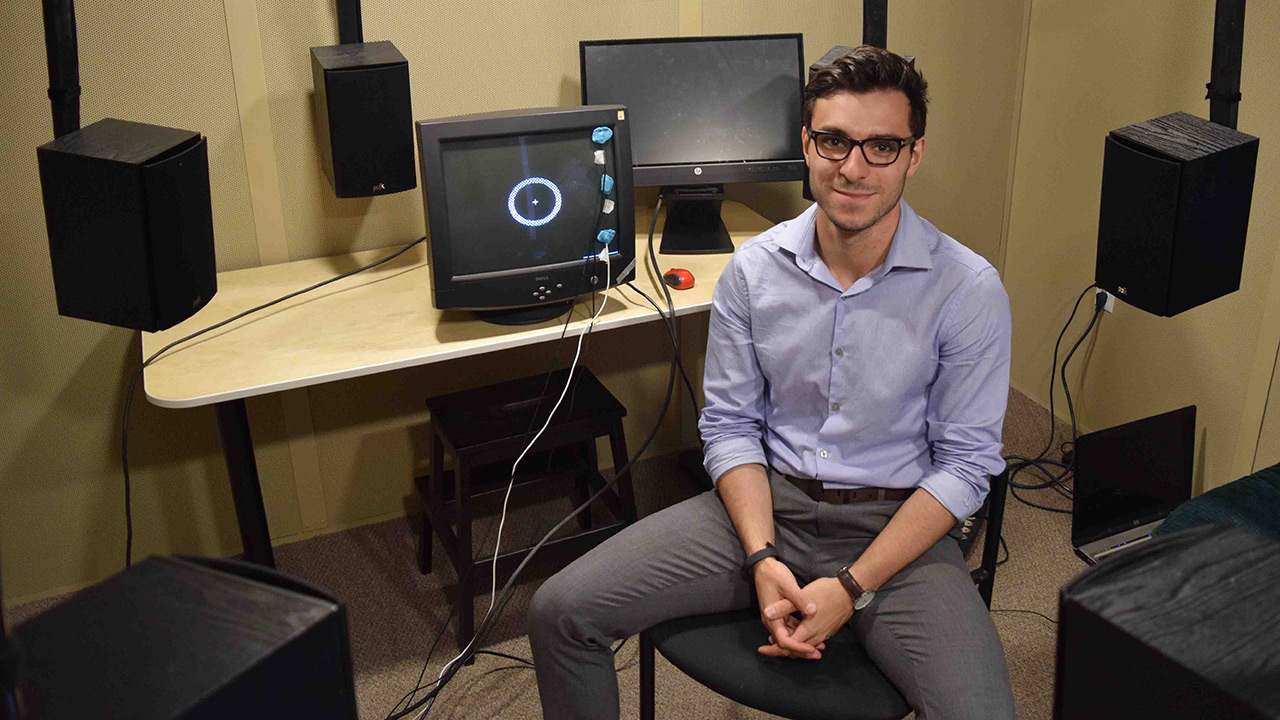Reaping the rewards of persistence
For the past three years Ayden Malekjahani has applied to the summer student program at Sunnybrook Research Institute (SRI) in the hopes of getting a placement, but it was to no avail. So, he tried a different approach this year.
“I used to email people when I wanted to get involved in research. I found Dr. Andrew Dimitrijevic’s web profile and thought it was really cool. The work that he does with cochlear implants was a blend of what I like—engineering and brain sciences. I decided to call. Everyone has an admin assistant, but when I called, Andrew actually picked up the phone. It was pretty funny,” says Malekjahani, who at last was accepted into the D+H SRI Summer Student Research Program.
Fascinated by how the brain works, he completed his Bachelor of Science degree in psychology at Wilfred Laurier University in Waterloo, Ont. Born and raised in Toronto, he says that whenever he would drive by Sunnybrook and see the large Hurvitz Brain Sciences sign, he would think, “wow; I would love to work there.”
His persistence paid off. Malekjahani is working in SRI’s hearing regeneration lab under the mentorship of Dimitrijevic, a scientist in the Hurvitz Brain Sciences Research Program at SRI, who studies the physiology of human hearing in normal and hearing-impaired people. The research group uses electroencephalograms, also known as EEG or “brain waves,” to understand the neural mechanisms of how sound is processed and perceived.
In the 12-week program, Malekjahani is working on a study that aims to develop biomarkers to predict outcomes after cochlear implant surgery. A cochlear implant is a device that restores hearing in people who are deaf by directly stimulating the auditory nerve and creating neural impulses that reach the brain and lead to sound perception.
There is wide variability in outcomes after cochlear implant surgery, notes Dimitrijevic. “People with cochlear implants may hear well in quiet settings but experience difficulties in everyday listening environments, such as following a conversation during a cocktail party,” says Dimitrijevic. “The goal of this research is to understand better the brain mechanisms of hearing with a cochlear implant and use this knowledge to improve outcomes after cochlear implantation.”
The lab has studies underway that involve cognitive and sensory processing in adults with cochlear implants. Malekjahani’s project aims to look at the visual area of the brain in deaf patients using high-density EEG, a noninvasive technique that detects electrical activity in the brain using small electrodes that are attached to a cap and placed on the scalp.
“When people are deaf, the visual area of the brain takes over into the auditory portion of the brain because the auditory portion isn’t being used. So, what ends up happening is some deaf people have better peripheral vision than normal hearing people,” says Malekjahani. “We are comparing the vision of normal hearing subjects with the vision of deaf patients about to undergo cochlear implant surgery.”
In a soundproof booth, the research team presents patients with a visual stimulus that appears in a circular shape on a TV monitor using three ranges: small, medium and large. The ranges measure the foveal vision (part of the retina in the eye that permits 100% visual acuity) and peripheral vision.
“People who are hearing impaired do not see the shape any differently; however, their brains respond to the shapes more strongly,” he says. Participants are asked to fixate on the cross in the middle of the circle that appears on the screen.
“We believe that patients who had better peripheral vision initially will have a better outcome with their implants. In order to have better peripheral vision in the first place, your brain has to be good at making new visual connections after hearing is impaired,” he says. For those individuals who have the ability to make new connections, the brain is able to adapt to the implant after surgery and regenerate hearing again.
From a young age Malekjahani has enjoyed problem solving. That’s why he decided to pursue a career in science instead of finance or accounting like most of his friends.
In September he will begin his PhD in biomedical engineering at the Institute of Biomaterials and Biomedical Engineering at the University of Toronto. “I’m working toward a career as a clinician-scientist where I’ll combine my interest in scholarly discovery with my passion for patient care,” says Malekjahani, who aspires to attend medical school after completing his doctorate.



